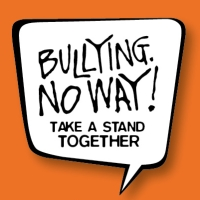What makes a young person torment and assault other children and students regularly? Why do some kids repeatedly push, shove and hit other children at school? What makes adolescents humiliate, insult, or ostracise a peer? Finding answers to these questions might help us understand why bullying occurs. This is especially important because bullying affects about 1 in 4 students in Australia. It can be a very traumatising experience with long-term consequences that reach well beyond adolescence and young adulthood. Unfortunately, there are many reasons as to why people might resort to bullying. And in most cases, more than one reason applies. What follows is a (non-exhaustive) list of pathways that make bullying behaviour more likely.
-
Violent homes. Witnessing violent and aggressive behaviours at home makes bullying behaviours at school more likely. Although home should be the place where children and adolescents feel most safe and comfortable, there are a number young people who witness or fall victims to verbal and physical forms of aggression and violence in their home on a regular basis. Examples of aggressive and violent acts include yelling, shouting, screaming, hitting walls and throwing objects, and physical assault. Unfortunately, children learn a lot about behavioural expectations from observing their role models. And while they are growing up, the role models they are most exposed to are their parents, uncles, aunties,grandparents, and older siblings. Through observing older family members, children and adolescents learn, for instance, how to handle conflict and negotiate solutions. They might learn that shouting is the best way to make their needs heard in their family. Children also form beliefs around behaviour, especially about what is normal – for instance, that it is normal to call someone names when they disagree. At school they are more likely to use bullying behaviours to communicate their needs or to solve conflict with peers. This can be around toys in the playground, or romantic interests in high school.
- Unsupportive relationships. Some kids and teens who bully do not have strong social connections. One of our most basic human need is belonging. Without social connections and feeling valued for who we are, we lack social and emotional support and can develop strong feelings of rejection and loneliness. In response to the pain of social isolation and in an attempt to protect the self from future pain, young people often start to reject others before they can be rejected. This is similar to the self-fulfilling prophecy whereby children and adolescents expect others to dislike them and they therefore behave in a way that leads to others rejecting them. As an example, Sam believes that a group of girls in her class will not like her and Sam decides to ignore them. The girls think that Sam has a snobby attitude and start spreading rumours about Sam. As a result, Sam and this group of girls engage in a series of bullying attacks that started with the prophecy that Sam would not be liked by her peers. Another point that plays a role in this pathway into bullying is the problem of emotional validation – or the lack thereof. Social relationships must validate us emotionally. This means that we need our family members to understand and accept our emotional responses. When this does not happen, we struggle with developing a strong sense of self. Bullying behaviour and intimidation of others might provide a sense of self and an identity to some students.
- Rewards and attention from peers. Bullying behaviour is often strongly rewarded – whether the person bullying obtains the toy of their choice or advances their social standing among peers by ruining a rival’s reputation. Put simply, there are rewards to bullying. Bullying is rewarding. Every successful act of bullying increases the likelihood of it reoccurring. If someone learns that they can get what they want and need when they intimidate others, then they will resort to this method to have their needs met. A further factor that makes bullying more likely is peer attention. In 9 out of 10 cases bullying happens in front of others. It is quite likely that the person who bullies does so to ascertain their power or to receive attention and admiration of their peers at the cost of others.
- Feelings of control. Some children and adolescents bully to feel in control. It is a powerful experience to influence another human’s emotions and state of mind. This pathway into bullying is often the case for people with a trauma background. Trauma rewires a person’s brain so that it triggers an anxiety response when a potential threat is encountered. This automatic response is out of the young person’s control. Further, the anxiety response disables the prefrontal cortex, thus turning off the rational part of the brain. This results in very emotionally driven behaviour – fight, flight or freeze to ensure survival. There are a number of triggers and these differ from child to child. Triggers could be physical reminders of the trauma, certain words or perceived threats towards a relationship. When triggered a person relives the trauma as if it was happening in the moment – a horrific experience. In order to avoid this re-living, children and adolescents with a trauma background will attempt to control their environment and others’ behaviours.
- Own bullying experience. Victims to bullying often turn to bullying themselves. One in three people who bully used to be bullied when they were younger. One may wonder how it is possible for someone to hurt another person when they know first hand how hurtful bullying can be. There may be two reasons that explain this vicious cycle. One, young people who bully might feel both – scary and safe – knowing that they intimidate others. This prevents or is at least meant to prevent future bullying attacks. Second, it might be that previous bullying victims feel better and stronger about themselves when bullying others. By hurting others, they are finally in a powerful position to get what they have been missing previously: their peers’ attention.
- No empathy. This pathway into bullying arises from a lack of empathy – that is a lack of feeling what others feel. A lack of empathy allows a person not to feel or perceive the victim’s pain. Bullying that is driven by the lack of
 mpathy is often used instrumentally. We often find it in young people who are smart and likeable and use bullying to further advance their social standing, or to obtain certain desirable positions. They can even weave their teachers into believing their stories rather than the victim’s story. Alternatively, they trick others into doing their “dirty work” for them. The person who bullied in those moments might not even be aware that they have been manipulated by their peer into acting on their behalf.
mpathy is often used instrumentally. We often find it in young people who are smart and likeable and use bullying to further advance their social standing, or to obtain certain desirable positions. They can even weave their teachers into believing their stories rather than the victim’s story. Alternatively, they trick others into doing their “dirty work” for them. The person who bullied in those moments might not even be aware that they have been manipulated by their peer into acting on their behalf.

